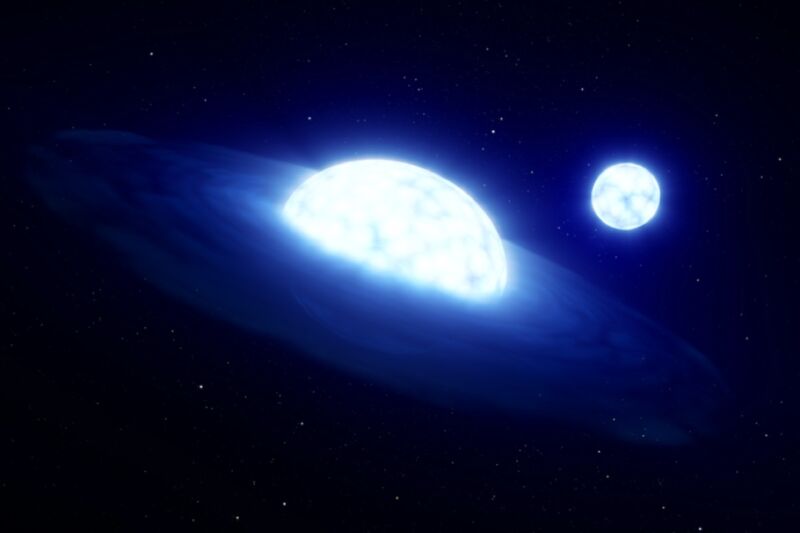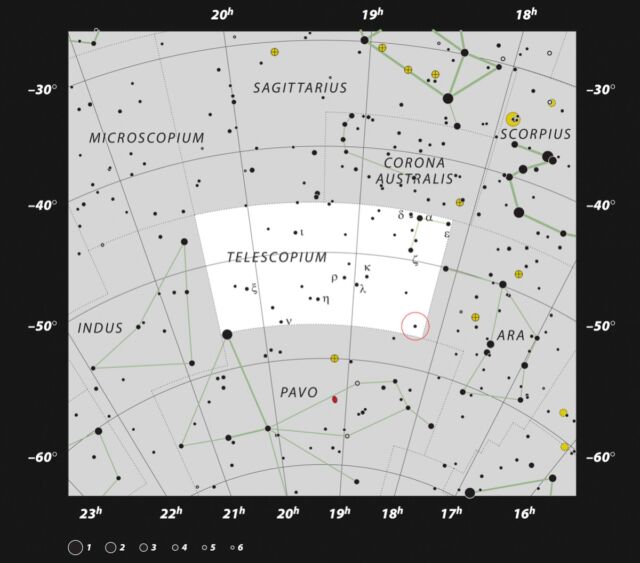
Astronomers identified an intriguing star system just 1,000 light years from Earth in the year 2020. Two distinct teams, however, couldn't agree on the nature of the system, which was called HR 6819. One group said they were looking at a trinary system with two stars orbiting a black hole. HR 6819's features, according to the other team, may just as readily be explained by a two-star system without a black hole.
To overcome the problem, the two organizations worked together to acquire more observational data. According to a new research published in the journal Astronomy and Astrophysics, HR 6819 is undoubtedly a binary system with no black hole. HR 6819, however, is a unique binary system since it was discovered immediately after one star had stripped its partner of its atmosphere in a process described as "stellar vampirism."
As we previously reported, scientists believe there are many more black holes in the Universe than we have discovered so far—possibly hundreds of millions, given our Universe's age. We have found so few black holes because we can only deduce their presence from their effect on surrounding matter, rather than directly observing them.The gravitational forces of a black hole can, for example, affect the orbits of surrounding stars, or infalling debris can form an accretion disk of hot plasma rapidly around the black hole, releasing intense X-rays. Alternatively, a star may approach a black hole too closely and be ripped apart, with the infalling fragments speeding and heating up to release X-rays into space.
However, the vast majority of black holes are silent, making them extremely difficult to discover. The finding of HR 6819 in 2020 provided significant indications about where at least some of the very dark black holes might be hiding, according to astronomers.
HR 6819 was included in a study of double-star systems conducted by researchers at the European Southern Observatory, and it appeared to be just such a system, therefore it was included in their observational data collection. However, upon evaluating their data, the astronomers discovered evidence of an unexpected third item in the system: a previously undetected black hole.
Two stars orbit each other as a binary pair in a trinary star system, while the third star orbits the pair at a greater distance. Because if the inner and outer orbits were the same size, one of the stars would eventually be ejected from the system, the system would be unstable. One of the two visible stars in HR 6819 appeared to orbit an invisible object every 40 days, while the second visible star orbited farther away. The team detected the presence of a possible black hole and determined its mass by analysing the orbit of the star in the inner pair.

However, some researchers decided that HR 6819 might be a binary system after a second review of the data published that year. The two stars had 40-day orbits, according to the research, and there was no black hole in the center after all. In that circumstance, one of the stars would have given up a significant portion of its mass to its companion.
To overcome the problem, the two organizations decided to collaborate, collecting fresh observational data with the Very Large Telescope (VLT) and Very Large Telescope Interferometer of the European Space Observatory (VLTI). "We all agreed that the system had two light sources," said co-author Thomas Rivinius, an ESO astronomer located in Chile. He was part of the team who proposed that HR 6819 could be a trinary system containing a black hole back in 2020. "The question then became whether they orbit each other tightly, as in the stripped-star scenario, or far apart, as in the black hole scenario."
The VLT's greater resolution revealed that the two stars were separated by only one-third the distance between the Earth and the Sun. There was no black hole and no brilliant companion star with a larger orbit.
"Our best guess so far is that we recorded this binary system shortly after one of the stars drained the atmosphere off its companion star," Julia Bodensteiner, an ESO fellow in Germany, stated. "In close binary systems, this is a widespread phenomenon that has been dubbed'stellar vampirism' in the news. The receiving star began to spin faster as the donor star was robbed of some of its material."
An example of stellar vampirism is a thrilling discovery in and of itself, because that stage of stellar evolution is brief and thus difficult to detect. HR 6819 could be studied further to learn more about how stellar vampirism affects the evolution of big stars. While the missing black hole is disappointing, Rivinius remains optimistic that the tens to hundreds of millions of black holes that astronomers believe are lurking in our galaxy will be discovered someday.


You must be logged in to post a comment.